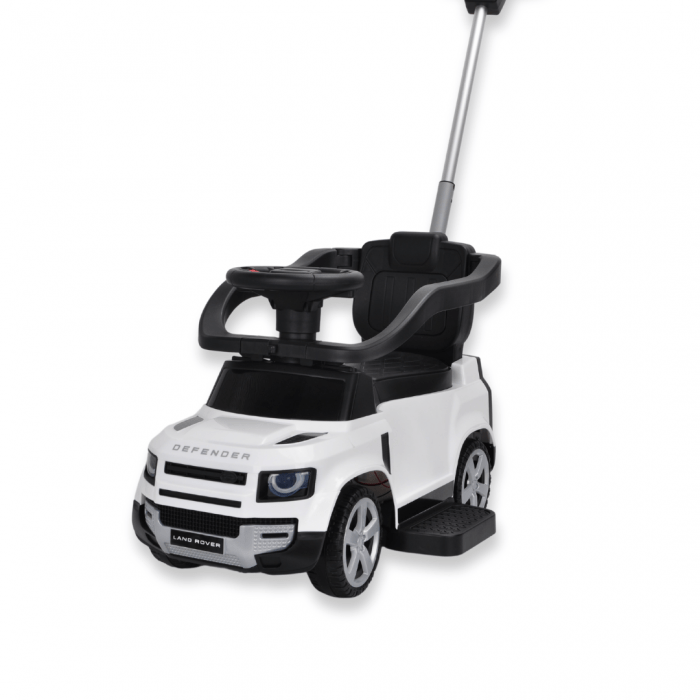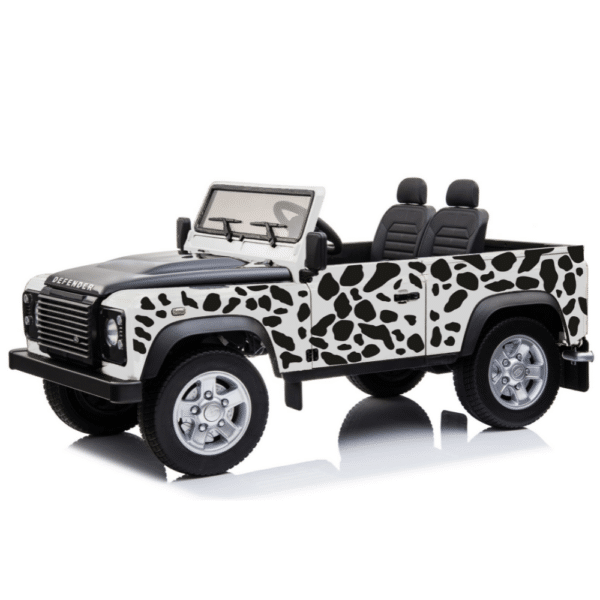Consider the child's age, size and developmental stage when looking at ride-on vehicles for children. This is to be sure that they will be safe and enjoy themselves. Here are a few things to take into consideration:
Younger Toddlers (1-3 years old) - For younger toddlers, look for ride-on cars that are designed specifically for the age range they are in. These cars have simple controls, a low design that's stable and has the option of a steering wheel or button. Choose ride on cars with broad bases to ensure stability.
Children who are older (3+ years old) As children get older, they can handle more sophisticated ride-on vehicles with additional features and controls. Find cars with adjustable seats, higher capacities for weight, and also interactive features like working lights, music and sound. Consider cars with ride-on features that have variable speed settings and parental controls that can accommodate various skill levels and ensure safety.
Size -
Height and weight - When choosing a ride-on vehicle, consider your child’s height and their weight. Pick a car that has a seat height and weight capacity that comfortably accommodates your child's weight. Avoid vehicles that are either too big or too small, as these may make it uncomfortable or unsafe for your child to travel in.
Comfort and Legroom Ensure your child is able to sit comfortably and has enough legroom in the ride-on. The dimensions of the seating area should be in line with the height and dimensions of your child.
Developmental Stage
Motor Skills - When choosing the right ride-on take into consideration your child's motor skills and coordination skills. While infants and toddlers may require more control to operate the car, older children are able to handle more complex controls as well as interactive features.
Independence and Confidence - Ride-on vehicles can foster confidence and independence in children by teaching them to control their vehicle and navigate. Pick a ride-on vehicle which allows your child to practice steering, accelerating and braking without assistance, gaining confidence over time.
Select a car that is interesting and attractive to your child. Choose a vehicle with characteristics, themes, or colors that appeal to your child. This could be a classic sporty car or truck.
You can choose an ride-on vehicle that is safe, comfortable and educational for your child based on their size, age and the stage of development. Have a look at the most popular kids cars for more tips including cars pedal car, remote control childrens electric cars, kiddies cars, toy in car, a toy car, lambo toy car, remote control childrens car, car electric ride on, two seater electric cars, childrens electric cars and more. .

What Is The Main Difference Between Outdoor And Indoor Use Of Car Models For Children?
These models have been designed with specific features and characteristics specific to the particular environment and usage scenario, whether either outdoors or indoors. The following are the key differences between these models - Indoor Use Cars
Size and Weight: Cars that are designed for indoor use tend to be smaller, lighter and more maneuverable in narrow spaces, like living rooms, hallways or playrooms. They can maneuver through narrow spaces and tight passages with ease.
Low Ground Clearance for Indoor Use vehicles have a low clearance to prevent them from getting stuck or snagged upon obstacles like carpets, rugs or thresholds. This allows for smooth, continuous movement on indoor surfaces.
Smooth Wheels The wheels of indoor-use automobiles are usually comprised of smooth substances such as plastic or rubber to provide traction and grip on smooth surfaces, such as hardwood floors, laminate flooring, or tile. They are engineered with a minimum of noise to avoid scratching or scuffing indoor surfaces.
Limited Speed - Indoor use cars typically have lower maximum speeds to assure safe and controlled operation in confined areas. This can prevent accidents or collisions that may occur with furniture, wall, or any other obstacle that may be found within.
Outdoor Use Cars -
Durable Construction - Cars that are designed for outdoor usage are constructed with robust materials. They can be constructed of strong metal or plastic to stand up to outdoor elements such as sunlight, moisture, temperature variations as well as rough handling. They are less prone to suffer from wear and tears caused by exposure to outdoor conditions.
Increased Ground Clearance: Outdoor-use vehicles have a higher level of ground clearance to navigate uneven terrain or bumps encountered in the outdoors. They can then navigate rough surfaces like gravel, pavement or grass without causing damage or getting stuck.
Traction Tires - The tires of vehicles that are used outdoors are usually fitted with patterns or treads that provide better grip and traction on rough or slippery surfaces. This allows for better control and stability when driving on outdoor terrain.
Weather Resistant - For outdoor use, vehicles can include components that are resistant to environmental or water damage including waterproof casings, sealed electronics and even waterproofed ones. The car is able to be exposed to mud, rain and puddles without loss of performance.
High Speed - Cars designed for outdoor use have greater speeds as they're designed to withstand the wide open spaces and long distances encountered in nature. It provides an exhilarating and thrilling experience for kids who wish to experience the outdoors.
Parents can select a car for their children that suits their needs, indoors or outside, by taking into consideration the style and features. This will guarantee a fun, safe and long-lasting experience for children. Read the best click here about kids ride on cars for more advice including car for toy, childrens electric ride on, childrens electric cars, toy toy cars, race car toy car, toy car for car, toy cars, riding digger, electric ride along car, car on ride and more. .

What Are The Possibilities For Children's Remote-Controlled Vehicles? What Are The Advantages And Disadvantages?
The various sizes, styles, prices, and types of remote control children's car are readily available to meet the budget and requirements of all. This article will provide an overview of the varieties, sizes, costs as well as pros and cons of remote control children's cars The types of remote control Children's Cars
Electric RC Cars - Battery-powered remote-controlled cars that can be used for outdoor and indoor use. The cars come in various designs, including buggies or trucks.
Nitro RC Cars – Gas powered remote controlled cars which provide better performance, but require greater maintenance. Electric RC cars are smaller and less expensive.
Scale models are replicas of real-world vehicles such as trucks and cars. They are also controlled remotely. Scale models come in various scales, ranging from 10 to 1-24 With larger scales offering greater detail and realism.
Sizes -
Remote control kids' cars are available in different sizes. From tiny to full-size replicas, they come in a variety of shapes and sizes. The size of the car can influence the efficiency of a vehicle, its speed, and its handling characteristics.
Micro-sized cars are small and compact. They are ideal for smaller children and indoor use. Larger-scale models offer greater power and durability, making them ideal for off-road racing in the outdoors and for outdoor driving.
Prices
The prices of remote control cars for children differ based on various factors, including size, features, brand, and build quality.
The RC cars that are small-sized and electric vary from $20 to $100, while larger-scale nitro and electric RC cars are available between $100 and $500 or more.
Models and high-end hobby RC cars range from a few hundred dollars up to 1000 dollars, depending upon the level of detail.
What are the pros and cons?
Pros -
Entertainment - Children's remote control cars can provide hours of entertainment and excitement for both children and adults.
Skill Development Utilizing an RC vehicle aids in the development of spatial awareness, hand-eye coordination and problem-solving skills.
Social Interaction - RC vehicles can be enjoyed by family and friends, and encourage interactions and socialization.
Customization - Many RC vehicles are able to be upgraded using upgrades and accessories, which can improve their performance and appearance.
Cons
Costs - Top-quality cars with the latest features, such as hobby-grade cars, can be quite expensive.
Learning Curve - Operating an RC vehicle requires practice and expertise, and smaller children may struggle when it comes to the controls at first.
Maintenance - Regular maintenance is required for RC vehicles including cleaning, lubrication and repairs.
Safety Issues - RC vehicles could be hazardous in the event that they aren't operated properly under the supervision of an adult. They may result in accidents, falls and electrical dangers.
The most effective remote control for kids' cars are those that provide a stimulating and educational experience to kids of all different ages. When selecting the ideal model for your child it is important to be aware of a range of aspects, including the size, cost features as well as security. Hobby-grade RC vehicles are best for kids who are more mature and enthusiastic however, simpler vehicles are better for younger and beginner children. Check out the most popular McLaren kids car for blog examples including remote control childrens electric cars, childrens electric cars, childrens electric cars, ride on car, toy ride, car toy car toy, toy toy cars, electric ride along car, childrens electric ride on, toy the car and more. .
